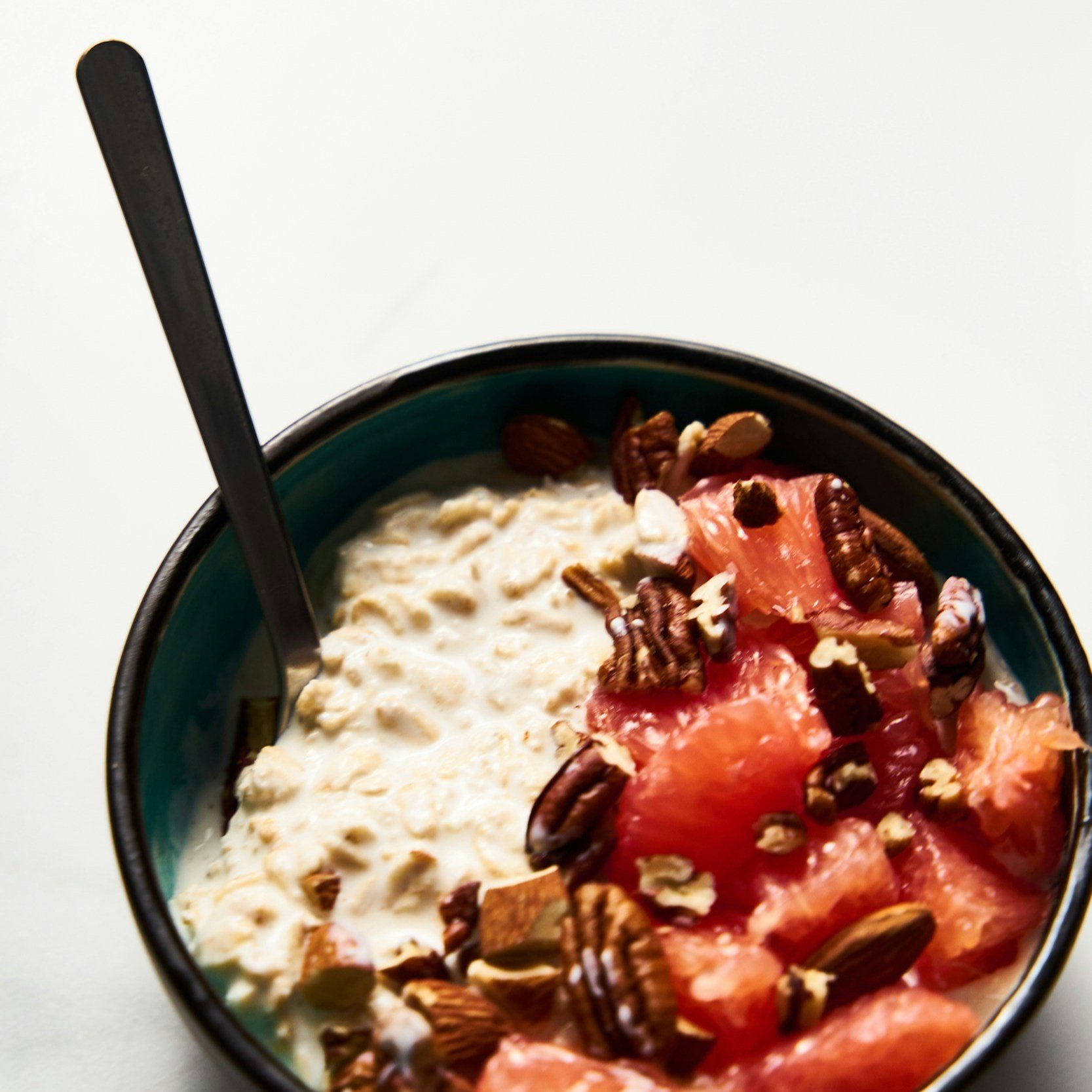Why Fiber Matters on GLP-1 Medications
GLP-1s work by delaying gastric emptying, helping you feel full longer. Fiber complements this process by further slowing digestion and promoting a feeling of fullness. It also supports digestion and regularity, which can be a concern when starting GLP-1s.
Key Benefits:
Promotes fullness: Helps you eat less without feeling deprived
Stabilizes blood sugar: Reduces spikes and crashes
Supports gut health: Feeds healthy gut bacteria (prebiotic effect)
Prevents constipation: Especially common in early GLP-1 use
How Much Fiber Do You Need?
According to the Academy of Nutrition and Dietetics, the recommended daily fiber intake is:
Women: 25 grams/day
Men: 38 grams/day
If you’re on a GLP-1, aim to hit your target slowly. Increasing fiber too quickly can cause gas, bloating, or discomfort. Build up gradually and stay well-hydrated.
Types of Fiber: Soluble vs. Insoluble
Soluble Fiber
Dissolves in water to form a gel-like substance
Slows digestion, which helps with blood sugar control
Sources: Oats, apples, oranges, carrots, flaxseeds, legumes
Insoluble Fiber
Adds bulk to stool and helps it move through the GI tract
Prevents constipation
Sources: Whole wheat, nuts, beans, cauliflower, green beans, potatoes
Best High-Fiber Foods for GLP-1 Users
Fruits:
Berries (especially raspberries and blackberries)
Apples with skin
Pears with skin
Oranges
Bananas (slightly green for resistant starch)
Vegetables:
Leafy greens (spinach, kale)
Broccoli
Carrots
Sweet potatoes (with skin)
Brussels sprouts
Grains:
Oats (especially steel-cut or rolled)
Quinoa
Brown rice
Barley
Whole grain bread and pasta
Legumes & Nuts:
Lentils
Chickpeas
Black beans
Almonds
Chia seeds
Flaxseeds
Tips to Add Fiber Without GI Discomfort
Start Slow: Add just 3-5g more per week until you reach your goal.
Stay Hydrated: Fiber needs water to move smoothly through your system.
Cook Veggies: Steaming or roasting can reduce fiber's roughness.
Try Psyllium Husk: A gentle soluble fiber that blends easily into liquids.
Avoid Fiber Bombs: Don't go from zero to 30g in one day.
Distribute Intake: Spread fiber across meals instead of eating it all at once.
Common Mistakes to Avoid
Overdoing fiber supplements: Start with food first
Skipping hydration: Fiber without water = constipation
Ignoring symptoms: If you feel bloated or uncomfortable, pause and reassess
Not reading labels: Some "high-fiber" bars are mostly sugar
Sample High-Fiber Meal Plan
Breakfast
Oatmeal with chia seeds, blueberries, and almond butter
Herbal tea or black coffee
Snack
Apple slices with peanut butter
Lunch
Quinoa salad with chickpeas, spinach, bell peppers, and olive oil vinaigrette
Snack
Greek yogurt with flaxseed and raspberries
Dinner
Grilled salmon, roasted sweet potatoes (with skin), and steamed broccoli
Dessert (Optional)
A small piece of dark chocolate and a pear
Final Thoughts
If you’re taking a GLP-1 medication, fiber is your ally. It helps manage side effects, improves digestion, boosts your weight loss results, and supports overall health. Start slow, eat whole foods, and don’t underestimate the power of water.
At Healthy Resolutions LLC, we provide ongoing nutrition and wellness support to help you succeed on your weight loss journey. Schedule a telehealth consultation today to get personalized guidance and a plan that works for you.
Need Help Building Your Fiber-Friendly Meal Plan?
info@healthyresolutions.com
www.healthyresolutionsllc.com
Connect with Colleen Graziano, APRN-BC for expert support




